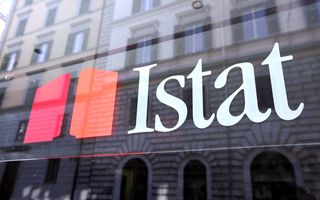(Finance) – In May 2024 Istat estimates a positive quarterly variation for retail sales both in value both in volume (respectively +0.4% and +0.2%). The sales of food products are increasing (+1.1% in value and +0.8% in volume) while those of non-food products are decreasing (-0.2% in value and volume). In the quarter March – May 2024, in cyclical terms, retail sales are increasing in value (+0.1%) and decreasing in volume (-0.1%), as are those of food goodswhile sales of non-food goods were unchanged in value and recorded a slight decrease in volume (-0.1%).
On base tendencyin May 2024, retail sales increased by 0.4% in value and decreased by 0.8% in volume. Food sales increased by 1.4% in value and decreased by 0.8% in volume, while non-food sales decreased both in value and volume (-0.3% and -0.8% respectively). “Among the shapes distributive “Sales by large-scale retail trade and businesses operating in small areas are growing, while sales outside of stores and online are decreasing”, commented Istat.
“Even in May, despite an increase in sales value of +0.4%, there was a decrease in volume of -0.8% – explains the president of AssoutentiGabriele Melluso – The worst situation is that of non-food goods whose sales, in 2023, are falling both in volume and value, attesting to a cut in non-primary consumption by families”. “Unsatisfactory increase. A slight recovery after the cyclical drops in April and March. Food sales are a little better, even if a rebound was inevitable after the 0.6% collapse of the previous month. Food, thanks to the drop in inflation, is also in positive territory in volume, but even in this case they are up 0.8% on April when in April they had fallen 0.8% on March. In short, ups and downs aside, they remain stable on two months ago” says Massimiliano Dona, president of theNational Consumers Union.
“Retail sales data continue to be negative, to the point that in the first 5 months of the year there was an overall decrease in volume of -1.1% compared to the same period in 2023, with sales of non-food goods remaining stable also in value”. This is stated by Codacons. “And if in May trade recorded yet another flop, the situation will not improve with the sales summer starting tomorrow throughout Italy – warns the association – The share of consumers interested in end-of-season discounts has dropped this year, to the point that just over one family in two (55%) says they want to buy at least one item on sale”.
“The data confirm for the month of May a situation characterized by the fragility of consumption, despite the stabilization of inflation. In this scenario, still marked by the attention of families to their purchasing power and by a domestic demand that is struggling to recover, the effects of climate instability are added. In fact, the drought continues in some island areas and in the southern regions, which is causing negative effects on agri-food production, while in the North the anomalous trend of the summer is impacting the sales of some sectors linked to seasonality”, he commented Federdistribuzione.
“Of the 9.1 billion growth in purchasing power, only 1.6 billion were actually allocated to new consumption, with a savings rate that rose by as much as 2.6 points in the space of a quarter – he pointed out Confesercenti –. Broadening the view in historical perspective and excluding the exceptional period of lockdowns, Italian families have not shown such a low willingness to consume since 2009. The significant decrease in the propensity to consume can be linked to the need to replenish savings burned during two years of high inflation, and also to the persistence of high interest rates, which on the one hand lead to a reduction in credit flows, on the other increase the return on savings”.
“The modest improvement recorded, in cyclical terms, by sales volumes in the month of May, although representing a positive signal, contains elements that lead to reading the data with caution – commented Confcommercio –. The recovery in May was largely driven by the recovery of food, a sector that had suffered a significant reduction in household purchases, while for many non-food items – clothing, footwear and furniture – the dynamics are still very disappointing. There is no particular optimism about the summer sales, even if an improvement in the volume of purchases is foreseeable”.
